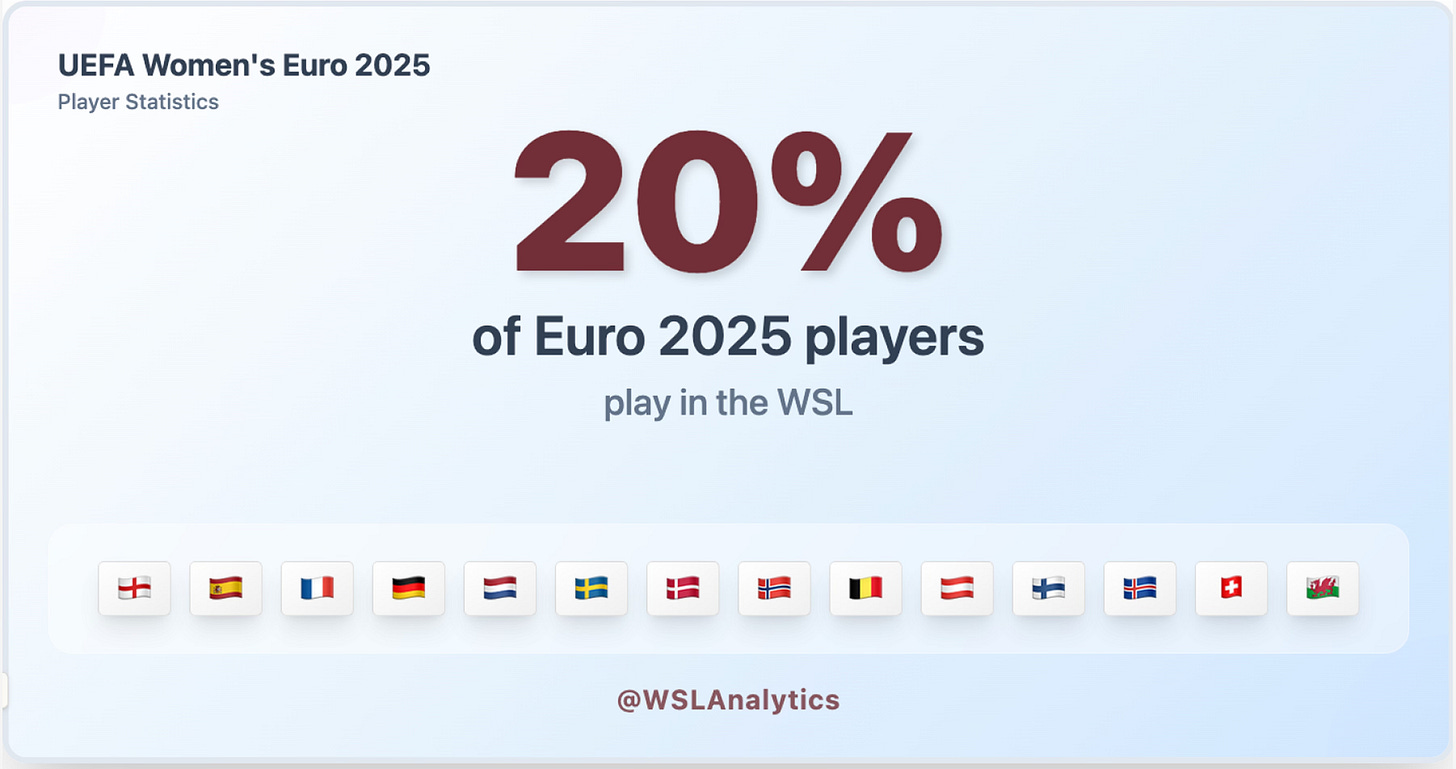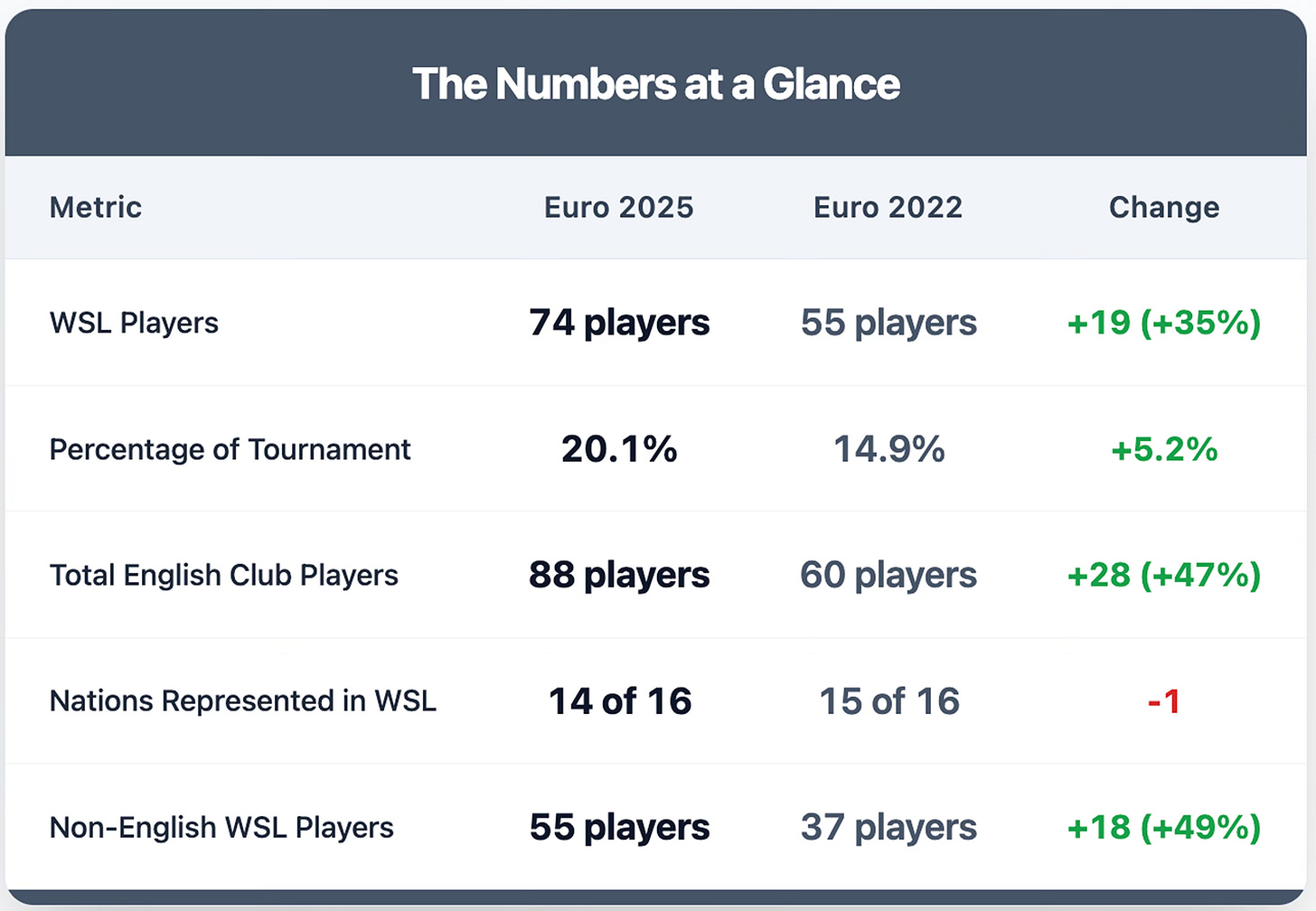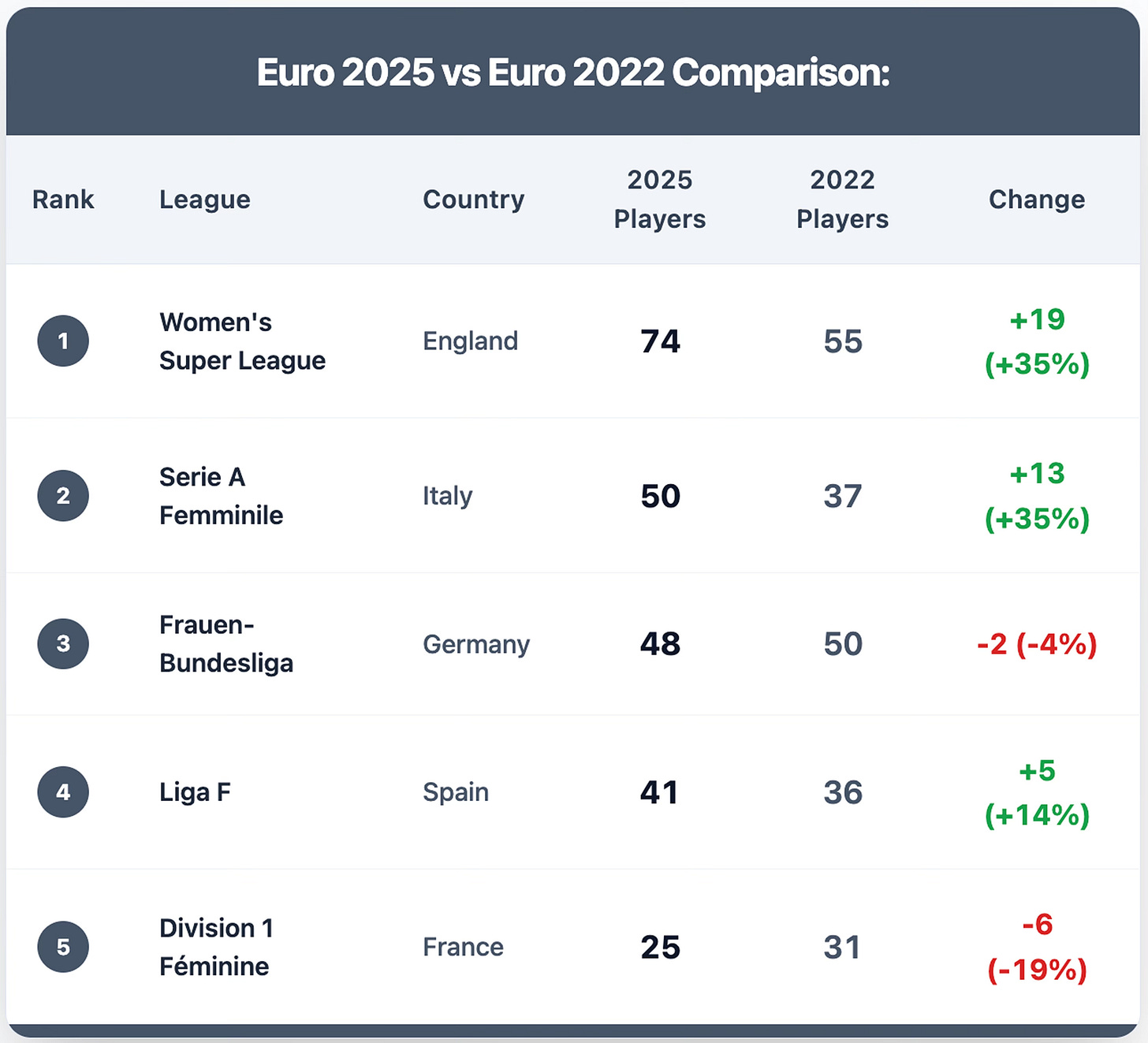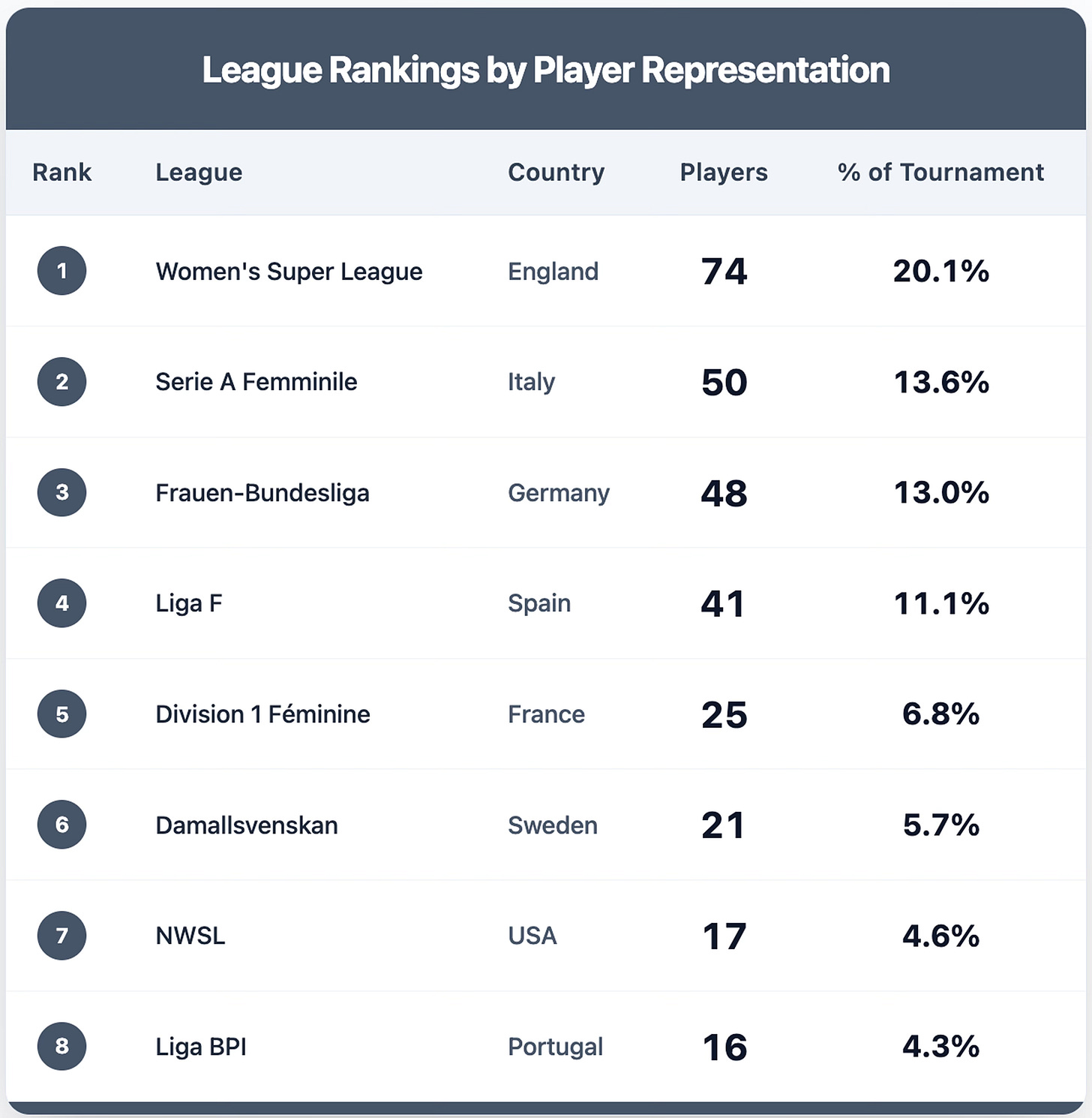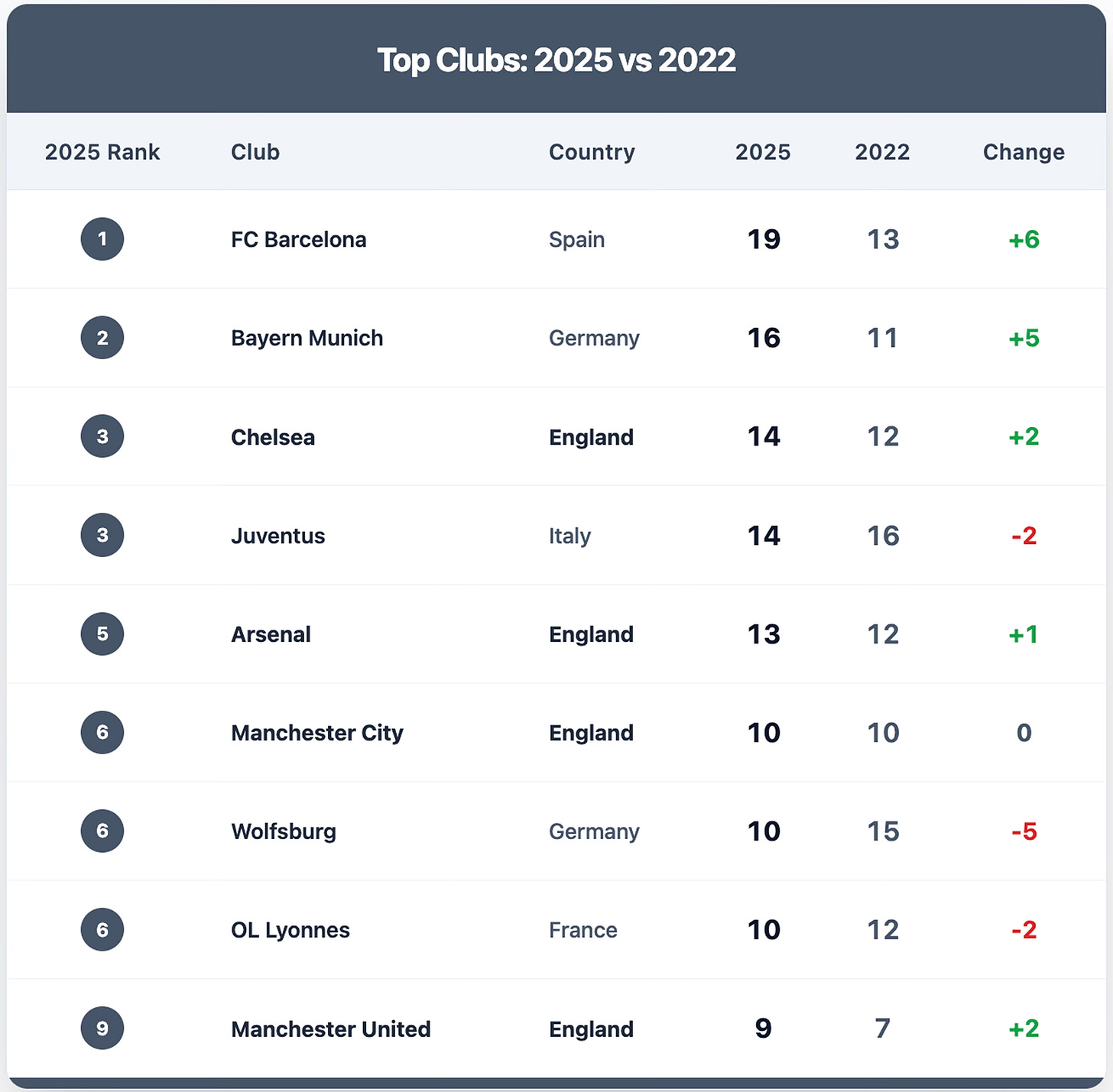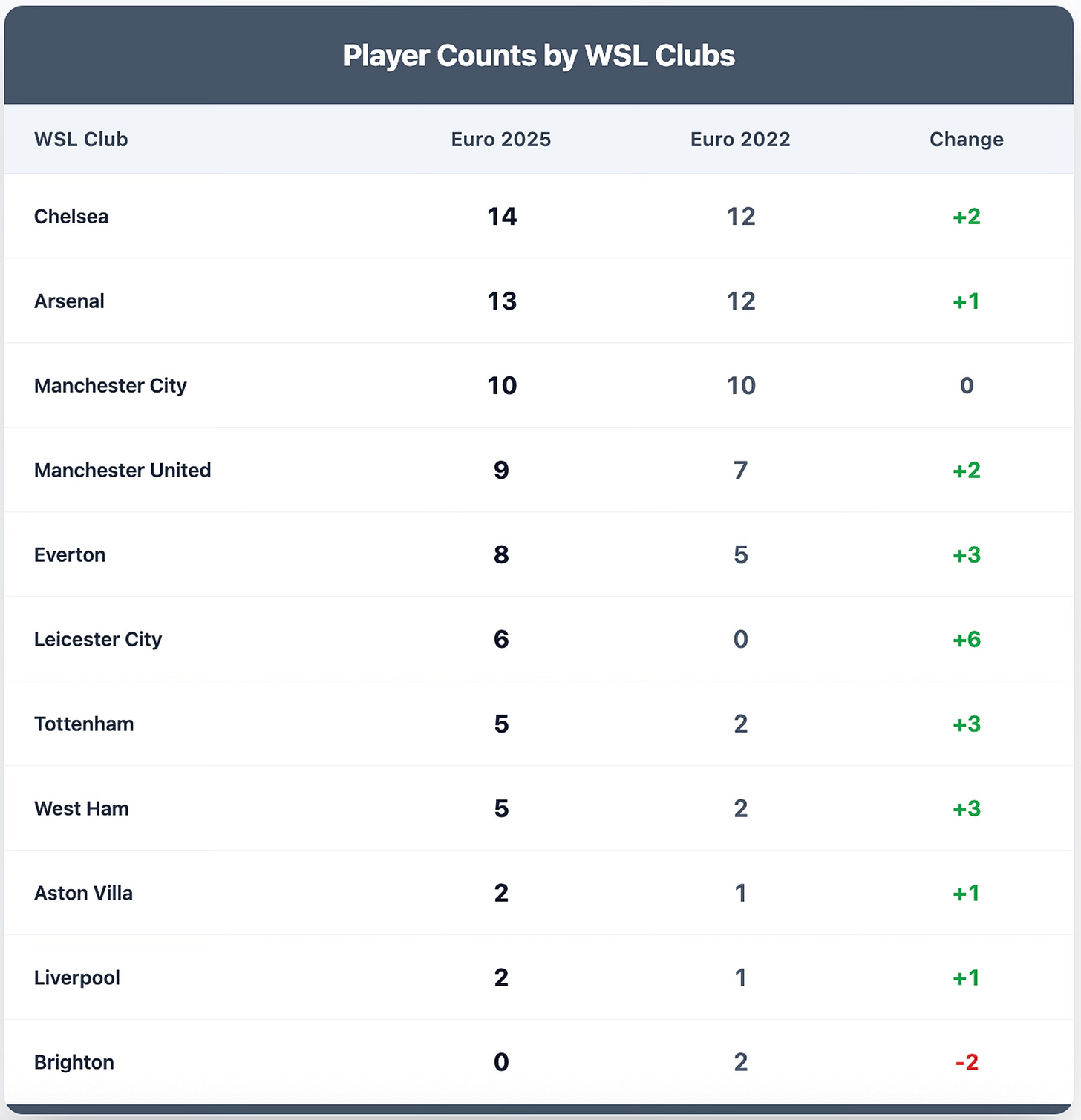The WSL's European Takeover: How English Football Became the Heartbeat of Euro 2025
In just three years, the WSL's Euro representation jumped from 1 in 7 players to 1 in 5. Here's what this dramatic shift reveals about the new power structure in women's football.
When the 16 teams take the field for UEFA Women's Euro 2025, there's one league that will be more represented than any other: England's Women's Super League. With 74 players across the tournament squads—roughly 20% of all 368 participants—the WSL has cemented its position as European women's football's premier destination.
But the most striking aspect isn't just the current dominance—it's the pace of change. At Euro 2022, the WSL contributed 55 players (about 15% of all participants). This jump—from roughly 1 in 7 players in 2022 to 1 in 5 now—represents a seismic shift in just three years.
🏆 League Representation: WSL's Accelerating Dominance
The gap between the WSL and other top European leagues has widened dramatically since Euro 2022:
Key Insight: The WSL and Serie A both achieved identical 35% growth, but the WSL started from a higher base. Meanwhile, Germany's Bundesliga declined 4% and France's Division 1 dropped a significant 19%.
Current Standing (2025):
🌍 The International Magnet Effect
The WSL's dominance isn't just about English players staying home:
19 players: England national team members in WSL
55 players: Non-English internationals who chose WSL clubs
14 of 16: Euro nations represented in WSL squads
Italy & Portugal: The only two nations with zero WSL players
🏟️ Club Power Shifts: The Changing of the Guard
The transformation at club level tells an even more dramatic story:
Major Shift: At Euro 2022, Juventus led with 16 players, followed by Wolfsburg (15) and Barcelona (13). By 2025, Barcelona has surged to the top, while two WSL clubs now rank in the top 5 globally. Notably, former powerhouses Wolfsburg (-5) and Lyon (-2) have declined significantly.
Remarkable Fact: If we expand to the top 15 clubs globally (by Euro 2025 player representation), England supplies five clubs—more than any other nation. Germany and Italy follow with three each..
🔍 WSL Club-by-Club: Transformation in Detail
The growth is evident across all levels of the WSL:
Remarkable Growth Stories:
Leicester City: From 0 to 6 players through strategic international recruitment
Everton: +3 players, largely through Danish talent acquisition
Tottenham & West Ham: Both more than doubled their representation
Mid-table surge: In 2022, 5 WSL clubs had 5 + Euro players; by 2025, 8 clubs do.
WSL Distribution 2025:
Chelsea ██████████████ 14 players
Arsenal █████████████ 13 players
Man City ██████████ 10 players
Man United █████████ 9 players
Everton ████████ 8 players
Leicester ██████ 6 players
Tottenham █████ 5 players
West Ham █████ 5 players
Aston Villa ██ 2 players
Liverpool ██ 2 players
What This Comparison Reveals
1. The WSL's Growth Spurt is unrivalled
The WSL’s 35% jump (55 → 74 players) dwarfed every other league. Serie A climbed 35%, Liga F 14%, while Germany’s Frauen-Bundesliga actually slipped 4% and France’s Division 1 fell 19%.
2. International Talent Flow Has Accelerated
Non-English WSL players rose from 37 to 55—a 49 % increase—meaning roughly three-quarters of WSL representatives at Euro 2025 are foreign internationals, up from two-thirds in 2022.
3. Cross-Border Movement is the New Normal
All 16 Euro 2025 squads feature players based abroad; every team has embraced overseas leagues compared with 2022, when a few were still entirely domestic.
4. Italy’s (and Portugal’s) WSL blank
Italy, which had Aurora Galli at Everton in 2022, and Portugal now stand out as the only Euro nations without a single WSL player in 2025.
5. English Clubs Now Rival European Giants
Chelsea’s 14 call-ups tie them for third-most worldwide, and five of the top 15 Euro-supplying clubs are English—more than any other country.
🎯 Bottom Line: A Seismic Shift
The WSL hasn't just grown—it has fundamentally altered the power structure of European women's football in just three years.
The Transformation by Numbers:
From 1 in 7 to 1 in 5: WSL's Euro representation jumped from ~15% to 20%
Foreign talent surge: Non-English WSL players rose 49 % (37 → 55), so roughly three-quarters of the league’s Euro contingent are now internationals.
Club power shift: In 2025, Chelsea (14) is joint-3rd worldwide for Euro call-ups, and five of the top-15 supplying clubs are English—more than any other nation. In 2022 no English side cracked the top three.
League depth: Eight WSL clubs now send 5+ players to the Euros, up from five in 2022.
Conclusion
At Euro 2022 Juventus topped the list with 16 players, followed by Wolfsburg (15) and Barcelona (13). Chelsea, Arsenal and Lyon were next with 12 each. Fast-forward to 2025: Barcelona leads with 19, Bayern München has 16, and Chelsea’s 14 tie Juventus for third—while English depth has exploded across the league.
If Euro 2022 hinted at the WSL’s potential, Euro 2025 confirms its pre-eminence. The league has certainly evolved from a strong domestic competition into the beating heart of European women’s football—the stage where the continent’s best congregate and compete.
This analysis is based on the final 23-player squad lists for all 16 teams at UEFA Women’s Euro 2022 and UEFA Women’s Euro 2025, published on UEFA.com and downloaded 26 June 2025. Club affiliations correspond to those registered with UEFA at the squad-submission deadline.


